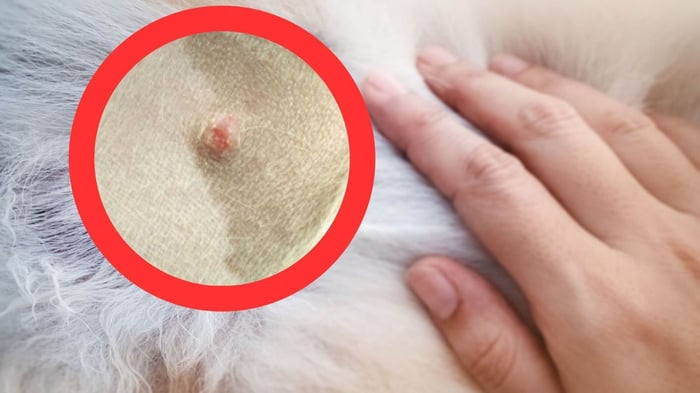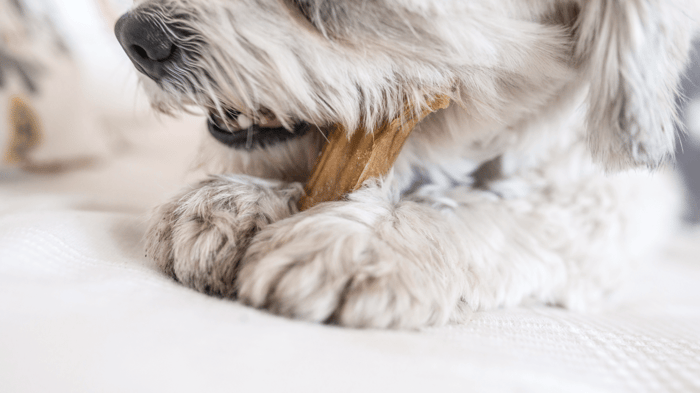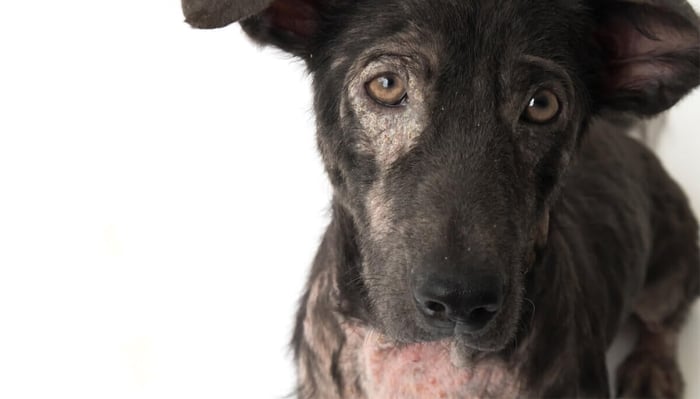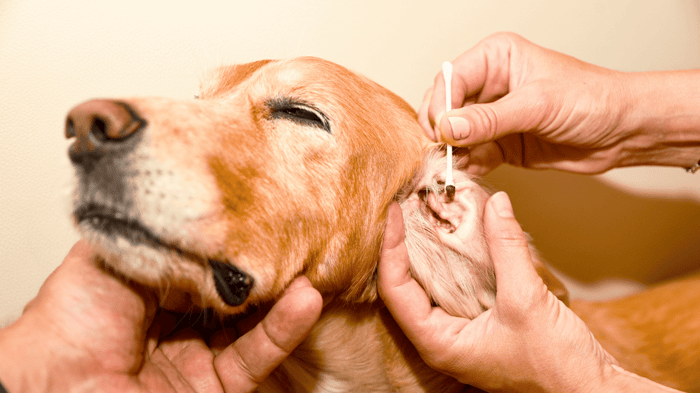Sebaceous cysts in dogs are a common occurrence that pet owners may encounter. These cysts are noncancerous bumps that develop under the skin as a result of blocked sebaceous glands. These glands produce the oil that helps to keep your dog’s skin healthy and supple. When they become obstructed, cysts can form, which may vary in size and appear anywhere on your dog’s body. Understanding the signs and potential treatments for sebaceous cysts can help you keep your pup comfortable and support their overall skin health.
To navigate the intricacies of these skin issues, it’s valuable to consider the perspectives of experienced veterinary dermatologists like Dr. Hilary Jackson and Dr. Rosanna Marsella. Their insights can provide clarity on the best care practices and highlight the importance of early detection and management. By staying informed about conditions like sebaceous cysts, you can play a proactive role in your dog’s wellness and help them lead a happy and healthy life.
So, What Are Sebaceous Cysts In Dogs?
A sebaceous cyst on a dog is a benign, closed pocket under the skin filled with a thick, cheese-like or oily substance. It forms when a sebaceous gland becomes blocked. These cysts are usually harmless but can become inflamed or infected, requiring veterinary attention for drainage or removal if necessary.
When your pup has a lump, it’s natural to worry. Sebaceous cysts in dogs are common. Think of them like a little balloon under the skin, filled with a cheesy or oily substance. They’re not cancerous, so you can breathe a sigh of relief. These cysts happen when the sebaceous glands – those are the oil factories in your dog’s skin – get blocked. Sebaceous cysts can vary in size; some are as tiny as peas, while others can be several centimeters across.
You might see these bumps pop up anywhere on your dog’s body but they’re especially common on the head, neck, and trunk.
Identification Guide:
- Location: Commonly found on the head, neck, trunk.
- Appearance: Small, round, may appear bluish if close to the skin surface. Sometimes they can look like white bumps.
- Consistency: Usually semi-firm, similar to a rubber ball.
Why do they form? It could be due to an overproduction of oil, clogged glands, or even hormonal changes in your dog. Sometimes, a sebaceous cyst might resolve on its own, but others can stick around or grow larger.
If you’re ever in doubt about a bump on your dog, a vet visit is a smart move. They can examine the lump and determine the next steps – whether that means monitoring it, draining it, or removing it. Remember, keeping an eye on your dog’s skin is part of keeping them happy and healthy.
What’s the Cost Range for Removing a Cyst from My Dog?
The cost for cyst removal can vary widely depending on size and location, typically ranging from $300 to $2,000. Always get an estimate from your vet.
Understanding Sebaceous Cysts
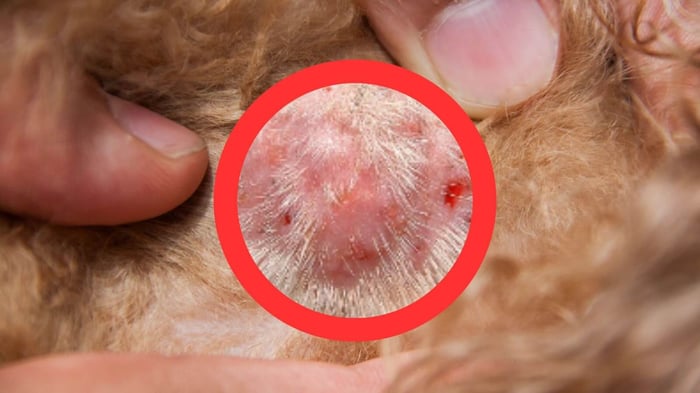
Sebaceous cysts are common benign lumps found in dogs, originating from the sebaceous glands. These cysts involve hair follicles and keratin and should not be a cause for alarm.
Definition and Characteristics
A sebaceous cyst in your dog is a small, raised bump that forms under the skin. Typically, these cysts are filled with a cheesy or oily material that consists of keratin, the protein that also makes up hair and nails. They are benign, meaning they are not cancerous, and are often soft to touch but can vary in firmness.
Causes of Cyst Formation
The development of a sebaceous cyst can be triggered by a blocked sebaceous gland or hair follicle. Causes can include genetics, trauma to the skin, or an accumulation of oil due to a blocked duct. Sometimes, inflammation or infection can also play a role in cyst formation.
Common Locations on Dogs
You’ll often find sebaceous cysts on your dog’s head, neck, trunk, and upper limbs. These cysts can also appear on areas prone to pressure, such as elbows, indicating that repeated pressure might contribute to their formation.
Are Sebaceous Cysts Hard or Soft?
Sebaceous cysts can vary in texture; some may feel hard while others are softer and more pliable. This is due to the contents within the cyst that can range from liquid to a more solidified collection of keratin and skin debris. If you’re concerned about the texture of a cyst, consult with a veterinarian who can provide the most accurate diagnosis and advice.
Common Disorders In Dog Sebaceous Glands
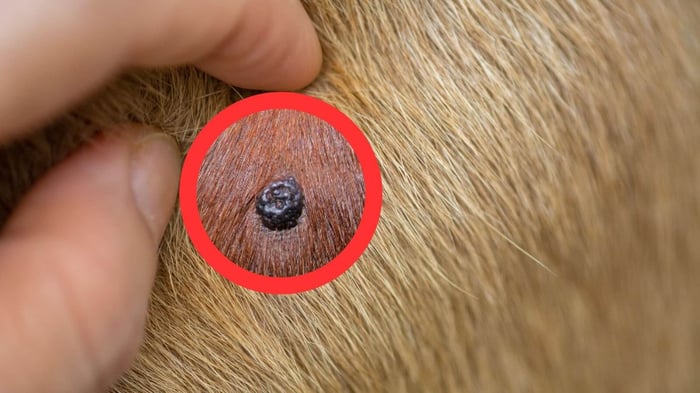
Sebaceous glands in dogs play a crucial role in maintaining healthy skin by secreting sebum. However, these glands can develop several disorders, including cysts, resulting in various growths and tumors. Here are some common other problems that can happen with these glands.
Sebaceous Gland Hamartomas are benign growths that emerge shortly after birth. These small masses can reach up to 2 inches in size and may appear elongated or round.
In older dogs, you might notice Sebaceous Gland Overgrowth (hyperplasia). These bumps are generally small, under 0.4 inches, and can have a waxy look. Some dogs, specifically terrier breeds, are more prone to this condition which affects mainly the head and abdomen.
Another condition, Sebaceous Gland Adenomas, appears in dogs as they age. Breeds like Coonhounds and Cockers are often affected. Unlike hyperplasia, these tumors can grow larger and may show up as multiple lesions, especially on the head, sometimes accompanied by a crust or signs of inflammation.
Sebaceous Gland Epitheliomas, often confused with the adenomas, are a sub-type that can burrow deep into the skin and may ulcerate. If you’re worried about any unusual growth, consulting with a veterinary oncologist can provide you with further guidance.
Lastly, a more serious condition is Sebaceous Gland Adenocarcinomas, malignant tumors found in middle-aged or older dogs. These rare growths can look similar to benign forms but are dangerous as they can metastasize. Certain breeds like Cavalier King Charles Spaniels might be at a higher risk, and male dogs could be more predisposed.
If your dog has a benign growth, surgical removal is an option. However, for adenocarcinomas, it’s the primary treatment, where affected lymph nodes may also need to be removed. Additional therapies like chemotherapy or radiation could be recommended by your vet.
| Disorder | Appearance | Common Breeds Affected |
| Sebaceous Gland Hamartomas | Small, round or elongated up to 2 inches | All breeds, noticeable shortly after birth |
| Sebaceous Gland Overgrowth | Shiny lumps under 0.4 inches | Terrier breeds, older dogs |
| Sebaceous Gland Adenomas | Larger than 0.4 inches, crusty | Coonhounds, Spaniels, northern breeds, older dogs |
| Sebaceous Gland Epitheliomas | Ulcerated, deep lumps | Similar to adenomas |
| Sebaceous Gland Adenocarcinomas | May resemble benign tumors, can spread | Cavalier King Charles, Cocker Spaniel, Terriers |
Regular vet check-ups are key in monitoring and managing these disorders. For any concerning skin abnormalities, it’s important to seek advice on the appropriate course of action. You can also learn more about skin tumor incidences and histopathological classifications.
Sebaceous Cysts Versus Follicular Cysts
Sebaceous Cysts:
These cysts originate from the sebaceous glands, which produce the skin’s natural oils. Sebaceous cysts form when the gland or its duct becomes blocked, leading to a buildup of sebum (the oily substance produced by sebaceous glands). These cysts typically contain a thick, cheesy or oily material and are often found under the skin. While they can occur anywhere on the body, they are commonly seen on the torso, neck, and head.
Follicular Cysts:
Also known as epidermoid cysts, follicular cysts are related to hair follicles. They develop when the follicle becomes clogged, leading to an accumulation of keratin, the protein that makes up hair and nails. Follicular cysts can look similar to sebaceous cysts but are more directly tied to the hair follicle itself. They can contain a semi-solid material and are also benign.
Key Differences:
- Origin: Sebaceous cysts arise from sebaceous glands, while follicular cysts are associated with hair follicles.
- Contents: Sebaceous cysts contain sebum, and follicular cysts are filled with keratin.
- Cause: The blocking of a sebaceous gland leads to sebaceous cysts, whereas clogged hair follicles cause follicular cysts.
Both types of cysts are generally benign and may not require treatment unless they become infected, inflamed, or bothersome to the dog. In such cases, veterinary intervention might be necessary, which can include drainage or surgical removal.
What Are Sebaceous Glands?
Sebaceous glands are tiny structures nestled within your dog’s skin. These glands are alveolar, meaning they have a simple sac-like design, and they produce an oily substance known as sebum. Sebum serves multiple functions, from waterproofing and moisturizing the skin to providing a barrier against infections.
Depending on where they’re located on the body, these glands can be classified into two categories:
- Free sebaceous glands, which discharge directly onto the skin surface.
- Pilosebaceous glands, connected to hair follicles.
Your dog’s sleek and glossy coat owes its shine to the sebum that coats the skin and hair. Sebum production isn’t just for looks; it helps with heat reflection too.
Interestingly, certain specialized sebaceous glands play a part in your dog’s social interactions by producing pheromones. These chemical signals can influence another canine’s behavior.
The process of creating sebum is active. It involves the complete lifecycle of the gland’s cells—a process known as holocrine secretion. Sebum is not only made within the glands but is also carefully regulated by various factors, from hormones to external stimuli. For instance, androgens—the male hormones—tend to ramp up sebum production.
It’s particularly fascinating to note that while sebum is key for a healthy skin and coat, it’s also utilized for medical applications, like spreading flea control products evenly over your pet’s skin.
For a deeper understanding of skin conditions and treatments in canines, feel free to explore the BSAVA Manual of Canine and Feline Dermatology, which could lend insightful information regarding dermatology in pets.
Identifying Sebaceous Cysts
When you spot a lump on your dog’s skin, it could be a sebaceous cyst. These are generally noncancerous and often don’t cause discomfort. Here’s how you can identify them.
Signs and Symptoms
Sebaceous cysts on dogs appear as raised bumps or lumps beneath the skin. Symptoms may include:
- A lump that feels round and smooth;
- Swelling at the cyst’s site;
- Possible redness if the cyst is irritated; and
- Discomfort but usually no severe pain.
Diagnosis by a Veterinarian
Only a veterinarian can diagnose a lump to determine if it’s a sebaceous cyst or something else. During the physical examination, they might perform a fine needle aspirate or a biopsy if needed. They’ll look for:
- Any discharge from the lump;
- The size and shape of the lump; and
- If the lump is firm or fluid-filled.
Differentiating from Other Lumps
Sebaceous cysts must be distinguished from other skin tumors such as lipomas, adenomas, or even cancer. Your vet might say:
- “This lump is movable and not attached, likely a lipoma.”
- “It’s a small, firm nodule, which could be an adenoma.”
Sebaceous cysts tend to have a central pore or opening if they become inflamed or ruptured.
How Do You Treat Sebaceous Cysts In Dogs?
Sebaceous cysts in dogs require proper attention to prevent infection and other complications. Your approach can range from home care for minor cases to professional vet treatments for more severe or persistent cysts.
Dog Sebaceous Cyst Home Remedies and Care
For minor sebaceous cysts, you can apply warm compresses to the area to encourage drainage and healing. Keep the skin clean by gently washing with an antiseptic solution to prevent dirt and bacteria from causing infection. Never squeeze a cyst, as this can lead to injury and scar tissue.
When to Seek Veterinary Care
You should schedule a vet visit if you notice any signs of infection like redness, swelling, or oozing, or if the cyst grows rapidly. If your dog shows discomfort, begins to lick or bite the cyst, or if it impairs their movement, don’t delay in contacting your vet.
Professional Treatment Options
Veterinarians can offer a variety of treatments including:
- Antibiotics for infection;
- Anti-inflammatories to reduce swelling; and
- Surgical removal or drainage if the cyst is large, recurrent or impacts quality of life.
Discuss with your vet the best course of action for your dog’s specific situation.
Preventing Recurrence
To help prevent future cysts, maintain your dog’s coat by regular grooming and keep them on a healthy diet to support their skin’s health. Inspect their skin regularly, especially if they have had cysts before, to catch any new ones early.
Can a Sebaceous Cyst Be Drained?
Yes, but it should be done by a professional. Vet-performed drainage or excision is the safest way to handle a cyst. Attempting to drain a cyst at home can cause more harm if not done correctly, leading to infections or injury.
Understanding Dog’s Skin Health
When you look at your dog’s coat, what you’re really seeing is the result of complex skin health, largely controlled by oil-producing sebaceous glands. Let’s dive deeper into how these glands affect your dog’s skin health.
Role of Sebaceous Glands
The sebaceous glands in your dog’s skin are crucial – think of them as tiny oil factories. They produce sebum, an oily substance that coats and protects your dog’s fur, keeping it shiny and waterproof. These glands are found near your dog’s hair follicles, which is why a well-oiled coat looks so luscious. However, if these glands don’t function properly, it can lead to skin problems.
Factors Affecting Skin Health
Age and health play big roles in your dog’s skin condition. Puppies might have more sensitive skin, and older dogs can experience changes in sebum production. Watch out for factors like genetic predisposition, where certain breeds may be more prone than others to skin issues. All breeds have these oil glands, but some, like Cocker Spaniels or Bulldogs, often have more troubles.
Sweat glands in dogs are not like humans’; they are mostly found on their paws. Instead, dogs mainly rely on their oil glands to manage their skin health. Regular check-ups can spot early signs of imbalance, whether it’s too much oil, which might make their coat greasy, or not enough, leading to dry, itchy skin.
Frequently Asked Questions (FAQs)
In addressing your concerns about sebaceous cysts in dogs, these FAQs will guide you through identification, treatment options, and when to seek veterinary care.
How can I identify a cyst on my dog?
What should I do if my dog’s cyst ruptures at home?
Are cysts on dogs a sign of cancer?
When is a cyst on a dog cause for concern?
Can I treat my dog’s sebaceous cyst at home, and if so, how?
Final Thoughts
When tackling sebaceous cysts in your dog, it’s important to remember a few key points:
- Keep an eye on the cysts. Even though they’re usually not serious, you want to make sure they don’t get infected.
- Resist the urge to squeeze them. It might be tempting, but this can cause more problems for your pup.
- Touch base with your vet. They know what’s best and can advise you on whether laser surgery or other treatments are a good option.
Here’s a quick list of do’s and don’ts:
- Do: Monitor your dog’s skin regularly for any changes.
- Don’t: Try to treat the cysts at home without professional advice.
Sometimes what looks like a simple sebaceous cyst might be something else, like canine pododermatitis or even an infection. So, it’s super important to let a professional make the call.
Just remember, with your careful watch and a vet’s help, your dog can be perfectly comfy and happy, cysts or no cysts! And who knows, maybe down the road, you’ll both just chuckle about that little bump scare.


